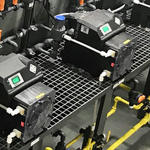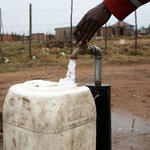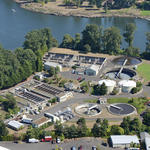| |
| |
|
The 411 for Water Treatment Professionals
|
|
|
|
|
| |
| |
| |
|
Water Treatment Plant Successfully Makes the Switch from Gas to Liquid Chlorine
|

Chlorine has been used to disinfect drinking water in the United States since the early 1900s and remains the most frequently used municipal water disinfectant worldwide due to its low cost and effectiveness at deactivating a wide range of pathogens. A treatment plant in Indiana had been using gas chlorine to treat its drinking water; however, for many reasons — including the increased safety concerns and requirements for advanced emergency management plans — the plant made the switch to liquid chlorine.
|
|
| |
|
How Safe Is South Africa’s Water From Cholera?
|

There’s cholera in the Vaal River, but even though the risk of the bacteria making it to household taps is very low, according to Benoît Le Roy of the South African Water Chamber, failing treatment systems and load-shedding may change this. The water chamber works with government organisations including Rand Water on implementing the national sanitation and water master plan.
|
|
| |
|
Half a Million Gallons of Sewage Leaks Into Oregon River After Facility Malfunction
|

Residents of Portland, Oregon, have been advised to avoid one of the nation's largest rivers after roughly half a million gallons of sewage leaked into the water system, local officials said Monday afternoon. The reason for the advisory, officials said, is because there could be "increased bacteria" in the water. The issue is in the Willamette River, which according to nonprofit organization Willamette Riverkeeper is the 13th largest river by volume in the U.S. The river is also home to the nation's second-largest waterfall by volume.
|
|
| |
|
|
| |
| |
| |
|
Stantec Partners With Carbon Removal Startup to Design First-Of-Its-Kind Advanced Water Treatment Facility
|
Stantec, a global leader in sustainable design and engineering, has partnered with the Palmdale Water District (PWD) and carbon removal startup Capture6 to design a first-of-its-kind Advanced Water Treatment (AWT) demonstration facility with novel brine management technology in Palmdale, California. The AWT demonstration facility is part of PWD’s Pure Water Antelope Valley (Pure Water AV) indirect potable reuse program, which will produce approximately 5 million gallons per day (MGD) of potable water using tertiary effluent from the Los Angeles County Sanitation Districts’ Palmdale Water Reclamation Plant. Stantec is providing program management services for Pure Water AV.
|
|
| |
|
|
| |
| |
| |
|
Six Trends Shaping the World's Water Planning Needs
|
According to Idrica, monitoring and efficient management of water aquifers, increasing the efficiency of distribution systems, water reuse, the use of non-conventional resources, early warning systems for extreme events and for citizens are the main solutions. Technology is key to addressing inefficient water resource management in many countries.
|
|
| |
|
|
| |
| |
| |
|
Uptake from Polluted Irrigation Water Using Anatase TiO2 Nanoadsorbent
|
The adsorption characteristics of titanium dioxide nanoparticles (nano-TiO2) for the removal of Pb(II) from irrigation water were investigated in this work. To accomplish this, several adsorption factors, such as contact time and pH, were tested to assess adsorption efficiencies and mechanisms.
|
|
| |
|
PHL Scientist Co-invents Ballast Water Treatment System vs Invasive Species
|
Ballast water has always been a requirement for ships. It helps trim or balance the vessels. But it also poses potential harm to environments where the water is disposed of. This is because ballast water often carries invasive animals, plants, microorganisms and other alien species that can devastate local marine biodiversity and coastal ecosystems.
|
|
| |
|
|
| |
| |
| |
|
Groundbreaking Study Shows Unaffordable Costs of PFAS Cleanup From Wastewater
|
A new report published by the Minnesota Pollution Control Agency (MPCA) finds that technologies and expenses needed to remove and destroy per- and polyfluoroalkyl substances (PFAS) from certain wastewater streams across Minnesota would cost between $14 and $28 billion over 20 years. The study is the first of its kind and, although specific to Minnesota, the novel methods developed to estimate costs can be applied anywhere.
|
|
| |
|
|
| |
|
|